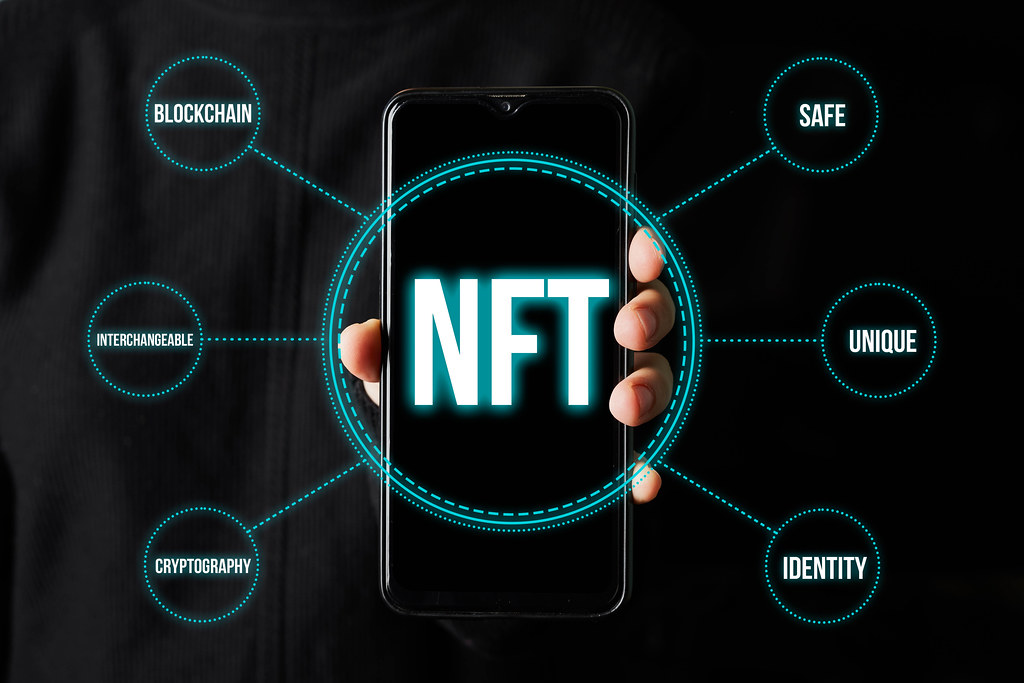What is NFT? Explaining in Simple Words
When you buy something with an NFT token (non-fungible token), a unique digital certificate is stored on the blockchain. This digital certificate is a proof of its authenticity and gives you only the right to use the item. NFT Explained Non-fungible tokens cannot be replaced or...

When you buy something with an NFT token (non-fungible token), a unique digital certificate is stored on the blockchain. This digital certificate is a proof of its authenticity and gives you only the right to use the item.
NFT Explained
Non-fungible tokens cannot be replaced or divided imperceptibly. The approach is appropriate for securing rights to a one-of-a-kind thing, such as a work of art, real estate, or an artifact in a computer game.
To put it simply, each item in the blockchain is referred to as a token. In an open blockchain, all tokens are treated similarly to coins with the same monetary value: they are identical and interchangeable. Cryptocurrency money operates in this manner: for example, one Bitcoin can be readily replaced with another without affecting the value.
However, Non Fungible Token (NFT) technology is a game changer and operates in a unique manner. A non-fungible token is a digital coin that cannot be substituted for another token without altering the object’s value and essence.
History
NFT technology was developed in 2017 on the Ethereum platform using smart contracts. The first work of art to be made into an NFT token was Banksy’s 2007 black and white stencil Morons (White).
Injective Protocol, a blockchain business, purchased it, burned it, and created the NFT token, a virtual asset attached to a “digital picture of an art work.” DJ 3LAU was the first musician to transform his own record into a token. He got $11.6 million through the sale of a limited edition album.
Grimes sold 400 NFT tokens that corresponded to four drawings she and her brother developed. Grimes earned $5.8 million in just 20 minutes from the token sale.
In general, NFT provides a platform for creative individuals to monetize their skills and grow their following. Due to the absence of logistical challenges, selling artworks digitally is easier than selling them offline.
Like cryptocurrency, NFTs are made on a blockchain, which is a database that keeps track of all the transactions that happen. The blockchain ensures the non-fungibility of non-fungible tokens. Through the blockchain, every user may verify the origin and history of a given NFT.
When a user purchases an NFT token, he or she obtains a certificate for the task. In this situation, the task remains stationary. It is housed in the everlasting storage (IPFS). This certificate is just a line of code that verifies that the owner of the token is also the owner of the object’s original copy. An NFT token is comparable to a picture that may belong to a gallery, museum, or individual, but can be viewed by the public through a catalog or exhibition.
You can even construct your own NFT token. To do so, you must take a digital object (image, music track, photograph, etc. ), register on a specialized marketplace (such as Rarible or OpenSea), and upload the thing along with a description and pricing. Numerous services will charge a fee for establishing an entry on the blockchain, i.e., a unique token.
Can Anyone Buy NFTs?
Yes, non-fungible tokens and associated artwork are available for purchase and sale by anyone. All you need is an Ethereum cryptocurrency digital wallet. Then, utilizing one of the numerous NFT marketplaces such as OpenSea or Rarible, you may begin building your digital art collection.
NFT tokens are traded on exchanges. These are platforms that have been built specifically for the purpose of purchasing and selling non-fungible tokens. They are stored, displayed, sold, and in some cases, created in this location.
Top 6 platforms are:
- Opensea.io.
The largest marketplace for NFTs. Its unique feature is the breadth of its offerings, which far outweighs that of other trading platforms.
You must pay a commission to publish a token. It is dependent on a variety of things, like the demand for them, the time of day, and so forth. Typically, it is between $70-100.
- Rare
It has a unique feature that allows authors to get money for each time their work is sold again.
You should pay a fee of between $30 and $100 for each piece you post.
- Nifty Gateway
It has an easy-to-use interface and a great reputation.
Nifty Gateway takes 15% of the money from the sale. When someone sells NFTs, the author gets 10% of the money.
- SuperRare
A platform that asks for proof that each NFT was written by the author. For this, artists make a special certificate.
Placement is free, but SuperRare takes 15% of the first sale.
- NBA Top Shot
NFT platform with support for the American Basketball League. The site’s concept is to create and sell digital collectible sports cards.
For each sale, you should pay a 5% commission.
- Foundation
In terms of design and functionality, the platform is considered more advanced. The site is unique in that you must acquire an invitation from an author in order to visit it.
The author receives 10% royalties on each resale of the token, and the publication is free.
The Bottom Line
Due to the frequent fluctuation in the value of cryptocurrencies and NFTs, your artwork may lose a major percentage of its value. However, their price can significantly climb over time, resulting in substantial gains.
Your digital wallet, like a physical one, is vulnerable to theft; if it is compromised or hackers obtain your passwords, they can steal your NFTs. It will be fascinating to watch the NFT market evolve — and how this technology is used to other applications.
